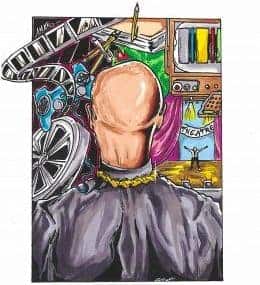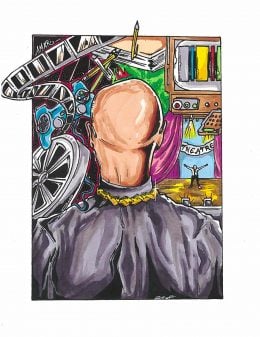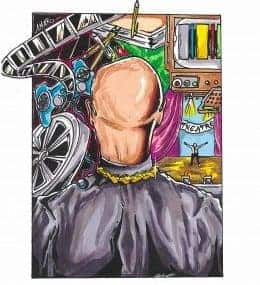Meet The Patels – Overviews/ Review (with Spoilers)
Overview If you ever found yourself interested in either learning about arranged marriages, some history of the Patels, or are just looking for solidarity in your struggle to date, and maybe make your parents happy, this is for you. Characters & Story (with Commentary) At the age of 29, Ravi, at least in America, isn’t…

Spoiler Alert: This summary and review contains spoilers.
Additionally, some images and text may include affiliate links, meaning we may earn a commission or receive products if you make a purchase.
Overview
If you ever found yourself interested in either learning about arranged marriages, some history of the Patels, or are just looking for solidarity in your struggle to date, and maybe make your parents happy, this is for you.
Characters & Story (with Commentary)
At the age of 29, Ravi, at least in America, isn’t doing too bad. He is a recognizable actor, no longer lives at him, and doesn’t have any serious baggage. However, when it comes to his parents’ perception? Yeah, he has a career, but why doesn’t he have a wife? That is one of the things explored throughout the film. How does a young man like Ravi, who dreams of reproducing his upbringing, find an Indian woman who fits all the criteria he has? The new age way hasn’t worked, thus far, and so all that leaves is the way of his parents.
Thus leading us on a journey in which Ravi and his parents reveal how modern day matchmaking and arranged marriages are done, especially when in America. But, all the while, there is this lurking feeling between the ideal and what is present and trying to consolidate, as opposed to compromise, the two.
Highlights
An aspect I always love seeing in documentary films is animation. For whether the animation is used to illustrate what perhaps there aren’t pictures or videos for, or are just used to break the monotony and put a comedic spin on things, it is a welcome little shake up which helps liven up movies. Now, for this film animation is mostly used for comedic effect and to help illustrate how Ravi, and perhaps his sister Geeta as well, see their parents, or how Ravi sees himself. Making for quite a few comedic moments which almost make you wish that like Sanjay’s Super Team, there were more cartoons made to represent Indians and their point of view.
Arranged marriage for, I believe, many Americans is a concept which may not be easy to wrap our heads around. To some it just may seem too weird for our parents, even when we are adults, to be so ingrained in our romantic lives; others may have the belief that it benefits men more than women; and of course there comes the thought of not only what choices do I have, but is my life really at that point where I need to rely on my parents to find someone to marry? And with Ravi exploring, and telling us, how at 29 he came to this point of giving his parents a say in his dating life, it begins to demystify the whole arrange marriage concept. To the point you almost question with the ways it has evolved and matured, why is it treated like such a foreign concept?
Like within He Named Me Malala, Aziz Ansari’s Master of None, and Learning to Drive to a point, you can see the difficulty which is being someone from a very traditional culture living in the western world. But speaking specifically on Ravi, his issue is he lived a double life, as I’m sure many who are people of color may feel they do. At home he was one person, adhered to his parents’ cultural beliefs, spoke their language, and what have you. However, once he stepped out of his home, he was an American in America. Someone who spoke English in the way his school taught him to and while he was still Ravi, son of two Indian immigrants, he was also this American born kid who assimilated with very little issue. Yet, and this is part of the heart of the story, how can he have these ideals of finding an Indian woman to love and marry, and yet have these American ideals? Ones which bring almost such a level of pickiness, due to the assumption of choice, that the woman he dreams of is likely won’t find him being the man she dreams of?
Another thing which I was thankful for in this film is that it isn’t just Ravi, and his sister Geeta in a small way, speaking of their experience as Indians in America going through what Ravi is. There are at least 6 or so others who speak on their path toward marriage, or lack thereof, and each offer a unique take. One dealing with marrying outside of faith, then there is the topic of colorism, this bio-data sheet used in modern times, which is just a mind-blowing concept, and then a string of other topics which honestly could be a multipart documentary on CNN or another news station.
I liked how, as noted with the last highlight, everything wasn’t about Ravi for it was also about his parents. Two people who seem to be well known back in India, for his dad is successful and mom a well-known matchmaker, and yet both of their children are in their 30s and single. Something which is almost presented as a failure in a way. For, in the mom’s case, it leads her to wonder if she perhaps didn’t instill enough of her culture in her kids, and while the dad is a bit more lenient at times, you can tell, especially with Ravi, his ego has taken a bit of a hit for having a son so old and single.
One last thing worth highlighting is that Ravi breaks down the whole Patel curiosity, in terms of why are so many Indian people last named Patel. It isn’t thorough to the point of going back to the first one, but enough is delved into to give you a somewhat grasp, or understanding.
Low Points
There are some topics like interracial dating, colorism, and a few others, I wished were covered a bit more. Mostly because they are hot-button issues which we don’t often hear about outside of a Black/White situation.
Being that Ravi’s sister Geeta has been going through the same thing Ravi is, I sort of wish she gave more information about a woman’s point of view during these proceedings. For with her noting she has been on over 200 some odd arranged dates, with no 2nd dates being amongst them, it would have been interesting to have a comparison between how it is for men and women in this scenario.
On The Fence
A part of me felt like perhaps the history of arranged marriage, the whole caste part of it, and maybe a bit more of Indian culture, should have been displayed. Which likely would have bloated the film, I’ll admit, but since there is rarely ever any sort of American Indian productions, I think I wanted something all in one. For some things like this lack of kissing in front of children I just couldn’t wrap my head around.
Final Thought(s): Worth Seeing
I’m very picky when it comes to documentaries, if only because I know they are committed toward introducing you to a culture, an issue, or a person, rather than entertainment being the goal. Which is why I wanted to see this. For while the trailer was comical, I didn’t start the movie knowing much about arranged marriages past what might be the common western nation perception. But, after watching this, I do feel like it is a good idea which has evolved with time, and I can fully understand why it lives on.
Making for the only real negative being that this documentary doesn’t fully bring various points of views, and only touches on some important factors briefly. Which is fine, since an all in one production may impede others bringing their point of view, but it is a bit frustrating. Yet, despite not getting a real in-depth conversation about colorism and caste issues in arranged marriage, much less how sexuality and even interracial dating may possibly be a factor, I must say this is worth seeing. Not something I’d put on the recommend list, but still worth seeing.
Follow/Subscribe To Our External Pages
- Plot and Dialog - /100
- Character Development and Performances - /100
- Visuals and Sound - /100
- Pacing - /100
- Value For Intended Audience - /100

